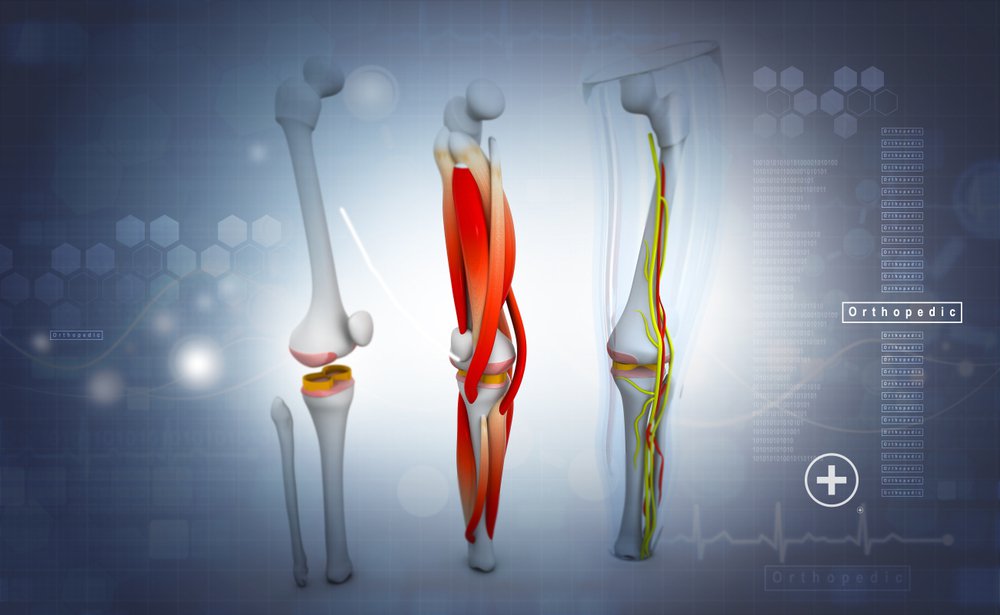 Did you know that your body is naturally equipped to heal itself? When you sustain a minor injury such as a small cut on your finger, your body is usually able to heal the cut without medical assistance. Certain musculoskeletal injuries and degenerative conditions however, may benefit from interventions that can aid your body’s innate healing abilities. This is where orthobiologics come into play.
Did you know that your body is naturally equipped to heal itself? When you sustain a minor injury such as a small cut on your finger, your body is usually able to heal the cut without medical assistance. Certain musculoskeletal injuries and degenerative conditions however, may benefit from interventions that can aid your body’s innate healing abilities. This is where orthobiologics come into play.
The term orthobiologics refers to the biological preparations that allow musculoskeletal injuries to heal more rapidly. Are you suffering from an injury or condition that is keeping you out of the sport you love or your daily routines? If so, it may be time to consult Dr. Rytel to learn more about how orthobiologics can help you.
Understanding the Body’s Healing Process
Your body heals itself in various ways. The basis of the body’s natural healing process involves cell reproduction. If you break a bone, your body begins a process of producing new cells to heal the damage. If you cut your skin, your body responds by sending specialized cells including stem cells which help the skin cells to repair the damaged tissue.
There are three factors that are essential to the body’s healing process. All of these factors are orthobiologic applications and include the following:
- Extracellular Matrix: This is the conductive material or tissue which houses the appropriate environment for cells to live. By definition, extracellular matrix is devoid of cells. Contained within the matrix are growth factors, collagen “scaffolding” which gives the tissue shape, and elastin which provides flexibility.
- Growth factors: These are a class of proteins that help the body heal from injury by “calling” the appropriate cells to the site and by stimulating them to expand in numbers and do the work of healing. Growth factors spur fibroblasts into ramping up collagen production, and small blood vessels to grow and supply the necessary nutrients for healing. Examples of growth factors are tissue derived growth factor (TGF) and bone morphogenetic protein (BMP).
- Stem cells: There has been great interest and great misunderstanding about stem cells. There are many different types of stem cells. The cells used in orthobiologic preparations are mesenchymal stem cells. It is most important to understand that stem cells can only regenerate tissues when they are placed in an optimal environment. Stem cells also secrete important growth factors that aid in healing and decreasing inflammation.
Orthobiologic Treatment: How Does it Work?
First, let’s break down the meaning of orthobiologic. Orthobiologic preparations are made from natural substances that are found in your body. “Ortho” refers to the bones, joints, muscles, and tendons in your body, and “biologics” refers to the substances that are naturally derived from your body and are capable of healing musculoskeletal tissues. Orthobiologic treatments utilize the patient’s own reparative systems and are designed to enhance your body’s natural healing processes.
What Are the Different Types of Orthobiologic Treatment?
The state of your condition will determine which orthobiologic treatment is right for you and your injury. Here are the types of orthobiologic treatment offered at Rytel Sports Medicine:
Platelet-rich plasma injections (PRP) - Also known as Autologous Conditioned Plasma (ACP). Plasma facilitates the circulation of red blood cells, white blood cells, and platelets throughout your body. Platelets are blood cells that form blood clots to stop bleeding. They also carry growth factors necessary for healing. PRP treatment concentrates a patient's own platelets which are delivered by injection to an injured area to encourage regrowth of defective tissue. This procedure is best used to treat partial tears in muscles, ligaments, or tendons. An amazing thing about PRP or ACP treatment is that it can also mitigate inflammation and therefore be useful in treating degenerative conditions such as osteoarthritis.
Extracellular matrices (ECMs) - These are typically tissue grafts that have all the necessary elements to foster new tissue but without the cells. Your body’s own cells ultimately will populate the ECM. ECMs are used to treat more severe tears in your body’s tissue including bone, tendon, and ligaments. ECMs are responsible for controlling cell communication and regulating cellular processes such as growth and movement. An example of an Orthopaedic application is the dermal graft for superior capsular reconstruction of the shoulder.
Stem Cell Therapies - Although there are many claims made of stem cells, the way they work is by stimulating the healing process by secreting growth factors in a similar manner to PRP. In an arthritic joint, stem cells work by decreasing the joint’s inflammatory response. It is inflammation that causes the pain and swelling of arthritis. Unfortunately, stem cells do not restore or regrow cartilage when injected in an arthritic joint.
Do I Need Orthobiologic Treatment?
Orthobiologics provide a more natural and less-invasive alternative to surgical procedures. If you are suffering from any of the following injuries, consult Dr. Rytel to find out if orthobiologic treatment is right for you and your injury:
- Broken bones
- Injured ligaments
- Injured muscles
- Injured tendons
- Osteoarthritis
Don’t allow your sports injury to take you out of the game you love or your day-to-day routines. Dr. Michael Rytel is highly experienced and trained in a wide range of orthobiologic regenerative medicine, and he will work with you to determine which orthobiologic treatment is right for you and your condition. If you are looking for orthobiologic treatment near you, schedule an appointment with Dr. Rytel today!

